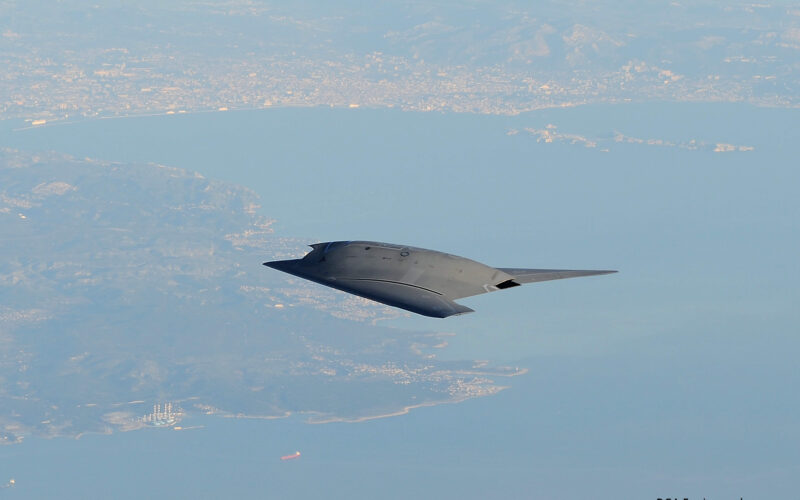The technology demonstrator nEUROn is carrying out its fourth test campaign. Called “Low Observability”, it aims at testing the stealth capability of the nEUROn against different sensors.
On January 4, 2019, the Direction Générale de l’Armement (the French Defense procurement and technology agency) announced that the series of tests started in November 2018 at Istres-Le Tubé Air Base, southern France, in collaboration with Dassault Aviation. A milestone was reached for the demonstrator, which flew its 150th test flight.
During this campaign which should last throughout early 2019, the nEUROn will have to face different systems. In December 17, 2018, two Eurofighter Typhoons of the Spanish Air Force experimental center (CLAEX) confronted the stealth drone using three types of sensors: the CAPTOR mechanical scanning radar, the IRST optronic system and the IRIS-T air-to-air missile. It is also an opportunity for armed forces to test their capacity to “detect a stealth drone representative of future threats.”
The nEUROn is a European program that involves Dassault Aviation for France as the main contractor, Leonardo for Italy, Saab for Sweden, Airbus for Spain, HAI for Greece and RUAG for Switzerland. The objective is to create a stealthy platform, of a size equivalent to that of a fighter plane, capable of detecting a ground target autonomously, and eventually carrying out an air strike using an internal bomb bay. A platform similar to the nEUROn could be used in collaboration with the Future Combat Air System (FCAS), the fighter program developed by France and Germany that should have the capacity to operate a “swarm of drones”.
Until the FCAS project became a reality, the nEUROn was the only European program that was developing an air fighting platform, since the development of the Dassault Rafale and the Saab Gripen came to an end at the turn of the millenium. It allowed European countries to develop their own stealth technologies, as the transfer of the United States’ strategic innovations in that area seemed improbable.

